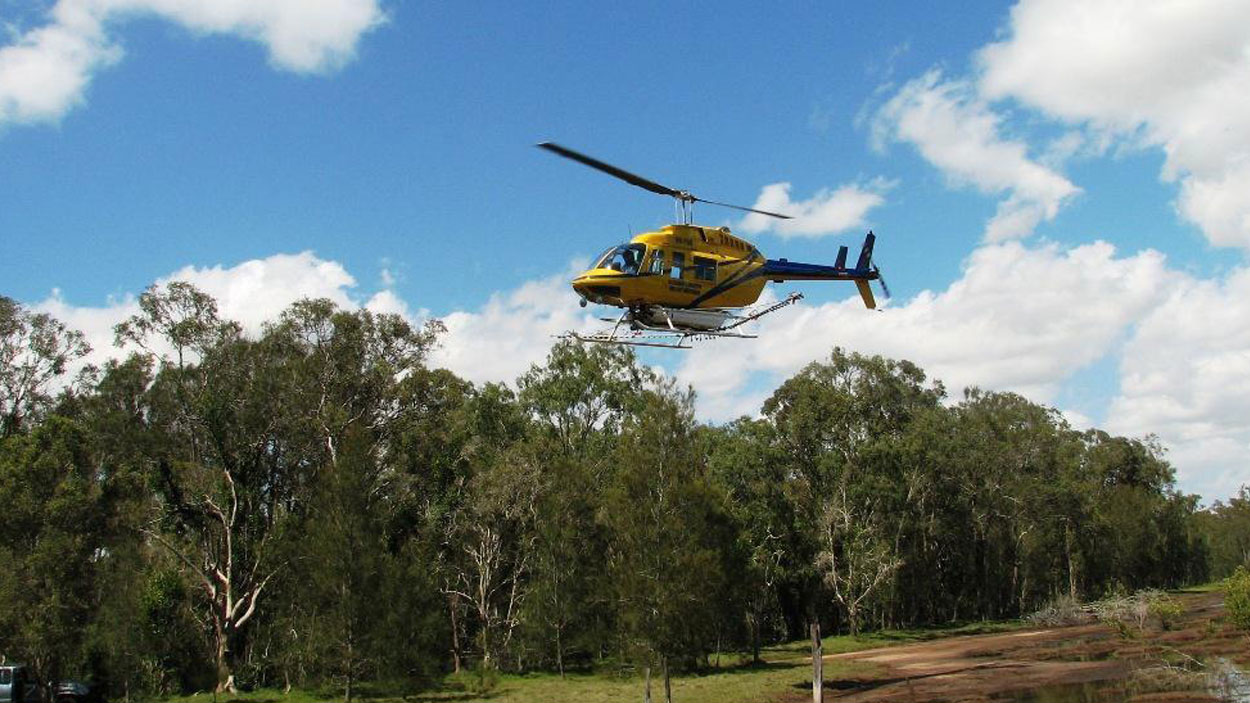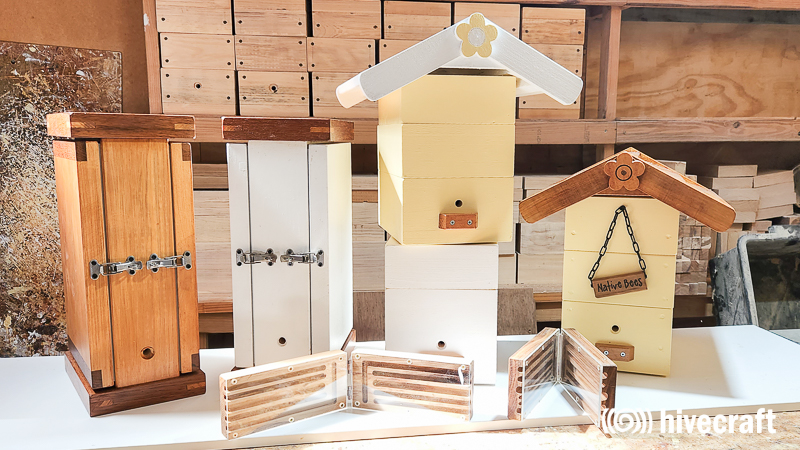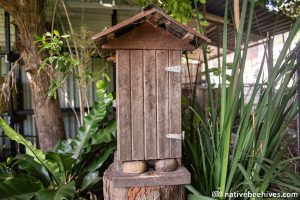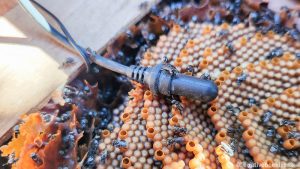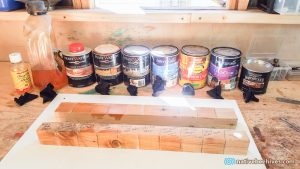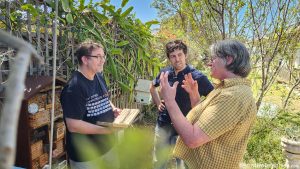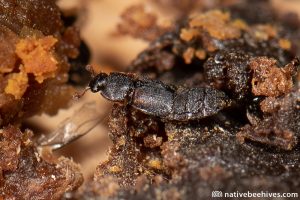There’s been plenty of concerns over the years about council spraying mangrove areas with pesticides to control mosquitos and if it has any adverse effects on our native stingless bees.
Dr Brian Johnson (QIMRB) and Dr James Hereward (UQ) presented their research at the Brisbane branch of the ANBA – 6 February 2022.
Brian is a senior research officer at QIMR-Berghofer Medical Research Institute and MARC – Mosquito and Arbovirus Research Committee – an independent Australian body involved in mosquito research, http://marc.net.au.
Brian is passionate about using environmentally safe and sustainable practices to control mosquitos. Council has moved completely away from broad scale application of insecticides to control adult mosquitoes towards softer applications of biological compounds to control the larval mosquitoes before they emerge.
Two pesticides are applied by council to control mosquitos. Both are applied at very low concentrations to the salt marsh water bodies where the larval mosquitoes are breeding.
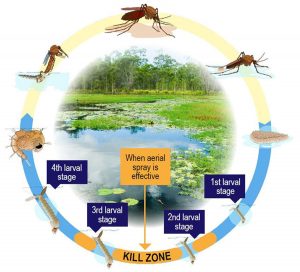
The insecticides are a bacterium (Bti) and an insect hormone (S-methoprene). Both are completely safe to humans, but could potentially affect non-target insects, such as native bees.
Bacillus thuringiensis var. israelensis (Bti) is a naturally occurring bacterium that is pathogenic to select aquatic insects like mosquitoes, blackflies and fungus gnats. It is applied as a liquid that contains spores that produce toxins that specifically target the larvae. These insects have an alkaline digestive tract of pH>7 which is required to activate the toxins. Honey bees digestive tracts are acidic at pH<5. It is thought that the digestive tract pH of stingless bees is similar to honey bees.
In addition to pH, Humans, animals are non-targeted in-sects are not affected because they lack the appropriate receptors for Bti toxins to attach to.
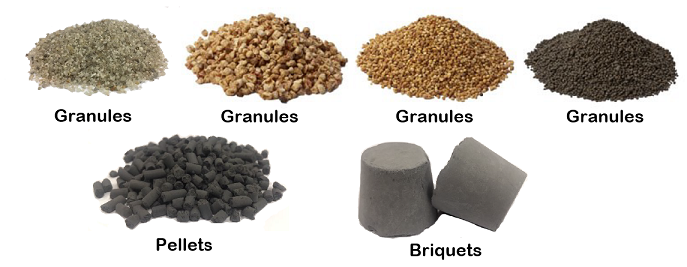
S-Methoprene, is applied as a liquid or pellets. It is a synthetic analog to the insect growth regulating hormone, juvenile hormone (JH). JH regulates larval moulting and prevents the harmless mosquito larvae from metamorphosising to the biting adult stage. S-Methoprene is used to control other insects. is commonly found in treatments for dog, cats and in cattle feed, and is approved by the WHO for use in drinking water cisterns.
S-Methoprene Is not active against adult insects. It acts by mimicking JH which must be absent for pupae to successfully moult into adults.
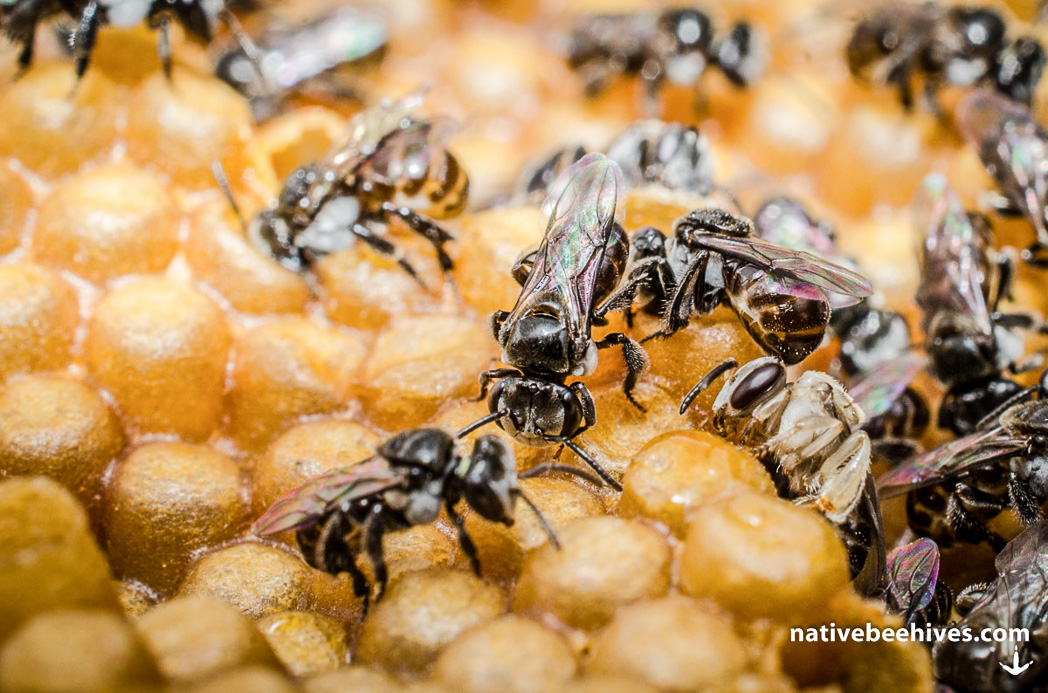
There have been quite a few studies of the impact of these pesticides on Honey bees. Bti has no impact. S-Methoprene can have an impact at higher concentrations, but the risk of exposure of honey bees has not been investigated. While it’s thought there’s no or minimal impact on stingless bees, there hasn’t been any specific research.
Research needs to focus on two aspects:
- The toxicity of increasing does on the animal (these studies are typically done in the lab).
- The risk of the insect being exposed to the insecticide in real world field situations.
It’s thought that stingless bee colonies will be outside of the direct treatment areas so there should be no risk at the time of application. The pesticides can be applied in granular or liquid forms. The liquid should have minimal drift at around 50 metres distance but may make contact with foraging bees, especially if plants are flowering at the time of application.
The ground water in the treated areas is saline so it’s not attractive to bees and there’s no evidence that the plants will uptake or absorb the pesticides through ground winter and contaminate nectar or pollen.
Liquid pesticides may contaminate flowers if present at time of application. The bees can transport the pesticides back to the colony, if flowering occurs when treatments are being applied.
More research required…
APVMA (The Australian Pesticides and Veterinary Medicines Authority) regulates pesticides but only requires that honey bees be tested. Despite this, MARC, UQ and QIMRB are determined to understand if other non-target organisms may be affected. Hence they are developing a project to look at how or if stingless bees use these saltmarsh / mangrove areas and to detect any pesticides inside stingless bee colonies. They will also look at the effect of doses of the insecticides on the bees. Dr James Hereward spoke about some of the details and methods to be used in this research.
Contacts: brian.johnson@qimrberghofer.edu.au and j.hereward@uq.edu.au
Images: Helicopter photo and Mosquito lifecycle image from Brisbane City Council
Article by Steve Flavel and Tim Heard
